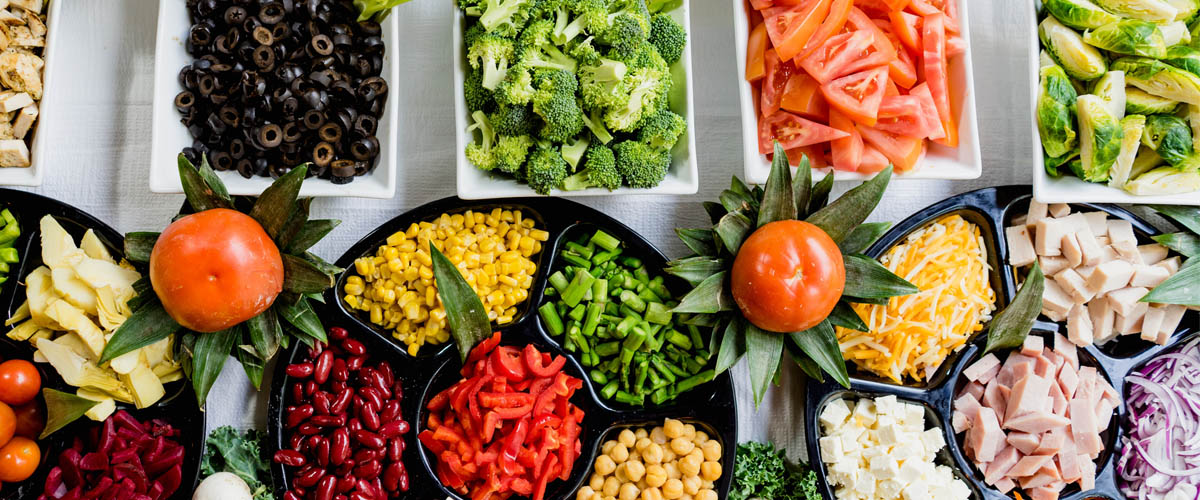Eating for Health
We eat food daily. Some people can afford three meals a day. They take the morning breakfast, lunch around noon and supper at night. Some people can only afford one full meal a day. But we have to eat something daily to keep us healthy and to sustain our life. Growing children need more nourishment for their overall development. If they do not get enough food they will be malnourished and their growth will be stunted.
The biggest irony in today's world is the fact that rich people in the world over-eat and catch diseases related to obesity, and being over-weight face such problems as hypertension and diabetes. The poor people who eat less than what the body needs suffer from diseases related to malnutrition such as anemia and other illnesses related to lack of immunity to disease-causing organisms.
Eating adequate and proper food helps growth and sustenance of life. Scientists have categorized what we eat, into three major categories; carbohydrates, proteins and fats. Wheat or corn products such as bread, pizza, cooked rice, pasta and cakes could be categorized as carbohydrates. Fruits and vegetables too are carbohydrates but they are called low-density carbohydrates.
Meat products such as chicken, mutton, beef, eggs, lamb and pork are animal proteins. Fish products too fall in to this same category. Vegetables such as beans, lentils and tofu too are called proteins. These products build and sustain the muscles and bones in the body. This category is absolutely essential for the growth of babies and children.
Fats such as milk, butter and cheese are called animal fats. Olive, coconut and canola oils are vegetarian fats. There is a certain amount of fat content also in nuts such as almonds, cashew and macadamia. All these foods provide the fat content that we consume daily.
Carbohydrates
Nutritionists advise us to include foods from all three categories (Carbohydrates, proteins and fats) proportionately in every meal. Where carbs (we will use the shortened form "carbs" instead of the long word carbohydrates from now onwards) are concerned, they recommend low-density carbs instead of high-density carbs. Low-density carbs are vegetables such as broccoli, spinach, cabbage, salad leaves, carrots and beat root. Fruits such as apples, pears, papaya, banana, oranges, grapes, mangoes and pine apples fall in the category of low-density carbs.
High-density carbs are wheat, rice and corn products such as bread, pasta, cooked rice, bagels, pizza, noodles and cakes. The healthcare community prefers us to get our carbs intake more from low-density carbs than from high-density carbs. The producers and distributors of high-density carbs polish the wheat and rice products to make them more appealing to customers. E.g. customers of super markets prefer polished white bread to original brown bread. Nutritionists say that original red whole wheat bread and red rice are far more nutritious than polished white bread or white rice.
Protein
The health care community accepts proteins as building blocks of the human body. Proteins are essential for the growth and sustenance of the body. As we saw before, proteins could be obtained from animal as well as vegetable food sources. Nutritionists recommend more vegetable proteins than animal proteins. Animal proteins could be obtained from fish, eggs and meat products such as chicken, mutton, lamb, beef and turkey. Foods containing vegetable proteins are soya products, such as beans, tofu and lentils.
Fat
Fats are the other major category of food. The health care community has divided fats into unsaturated and saturated. They prefer us eating more unsaturated fats than saturated fats such as olive, coconut and canola oils which are used in cooking of foods or sprinkled over salads or bread. Fruits such as avocados and nuts such as cashew, almonds, macadamia and pistachios are good sources of un-saturated fats.
The food sources of saturated fats are milk products such as butter, cheese and other milk drinks and fatty portions of animal meats that are normally deposited just below the skin. These saturated fats are preferred less as sources of food fat than unsaturated non-animal fats.
Dietitians prefer that we eat three major meals a day ; breakfast. lunch and dinner. They recommend eating the right type of food (as mentioned above) in moderation each time that we eat and to include all three categories of food with each meal. Some dietitian recommend eating all three categories of food in small portions every two to three hours. But the modern day life style does not allow us to take our meals every two to three hours a day. There are three more essential habits that we should include in our daily life style. These will be discussed in detail in other articles.
Breathe Fresh, unpolluted and pure air deeply thousands of times a day. Drink 3 to 2 liters of pure water every day. Be active. walk, swim, jog, cycle, use machines in the gym, practice yoga or tai chi at least for 30 minutes every day.
If you ask me the most important meal of the day I would say it is the breakfast. There is an old proverb which goes like this; Eat breakfast like a king, luch like a prince, and dinner like a pauper. Another version of the titular proverb goes; Eat your breakfast alone, share your lunch with a friend, and give your dinner to your enemy.
(If you have physical or psychological problems, or are on any medications or under the care and the supervision of any physician, psychiatrist or therapist, please consult your physician, psychiatrist or therapist, before you make any life style changes.)


